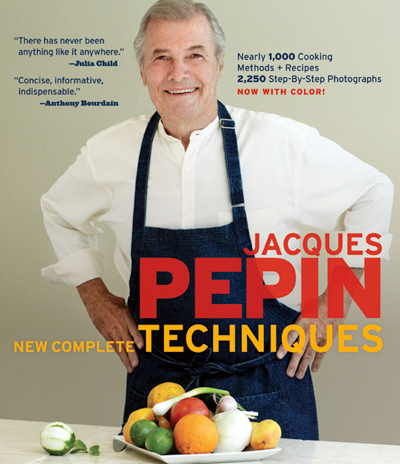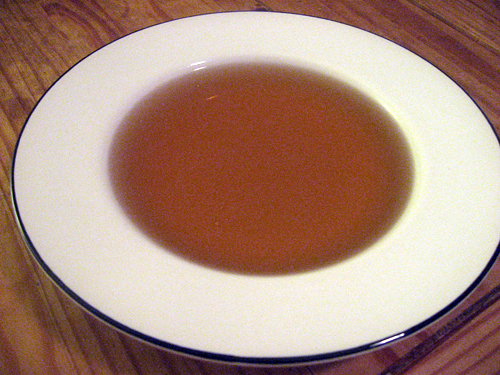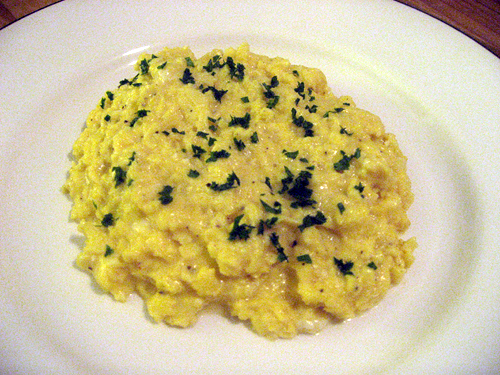As an English major and culinary school grad, the idea of consommé both enchants and terrifies me. In stacks of novels, elegant ladies sup on consommé served in fragile bone china bowls before traipsing across polished floors to wilt onto fainting couches. And because the ideal consommé contains nothing other than exquisitely clear and sublimely seasoned liquid (possibly served with equally exquisite garnishes, like airy quenelles or tiny raviolini) it's basically the most refined soup ever.
That's my romantic ideal of consommé. And it's one which jockeys impossibly with the complex reality handed to me in culinary school. There was so much emphasis on breaking (yet not breaking) the clarifying "raft," the insistence on never allowing the stock to boil, and the overwhelming feeling that if you looked cross-eyed at your consommé you'd ruin it. As a result, during those nine sweaty months, I both longed for and dreaded making this genteel dish.
Enter Jacques Pépin Complete New Techniques, which, weighing in at close to six pounds, is a serious book for serious cooks. This hefty addition to my bookshelf (courtesy a review copy from my editor at KQED's Bay Area Bites) is Jacques' latest culinary tome. It's an updated version of his 2001 Complete Techniques, which was itself a compilation of La Technique (1976) and La Methode (1979), and it's admittedly one that filled me with skepticism. Being more of a hands-on person when it comes to learning, I didn't think I could truly learn techniques from the pages of a book -- even one from a culinary master such as Jacques Pépin.
The burnished amber liquid now resting in my refrigerator is proof that I am wrong.


